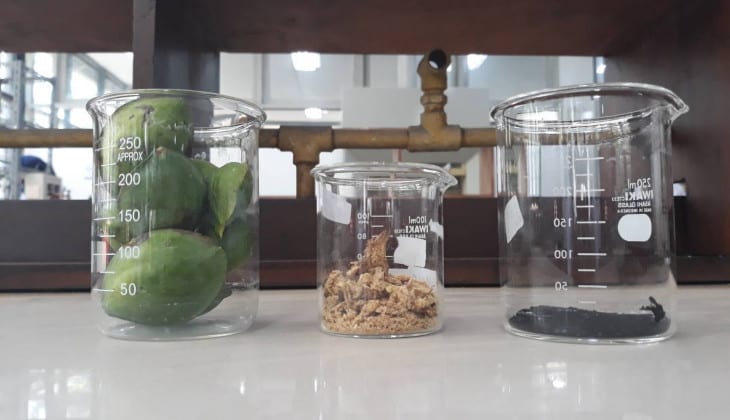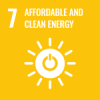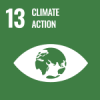
Three UGM students examined the use of country almond (Terminalia catappa) waste into activated carbon carrying bimetallic cobalt-molybdenum as a catalyst in the process of hydrocracking plastic waste.
Dewi Agustiningsih, Satriyo Dibyo Sumbogo, and Nawwal Hikmah, supervised by chemistry lecturer, Mokhammad Fajar Pradipta, S.Si., M.Eng., worked on this research through the Student Creativity Program – Ministry of Research, Technology, and Higher Education year 2019.
The research was done to give solution to the problem of high level of plastic waste. Besides, there is already a ban in place in several areas against the use of plastic bag. “The ban is a preventive measure, but it takes a long time to minimize the amount of the waste. The repressive effort that can be done is to process the existing plastic waste into useful materials,” said Dewi.
They converted Low Density Polyethylene (LDPE) plastic waste into a gasoline fraction using country almond waste. She explained that country almond waste has lignocellulose content with high lignin content, which is 43.46%. This makes country almond shell potentially a good source of active carbon in hydrocracking process.
She explained bimetallic cobalt-molybdenum was used because CoMo had been proven to have better selectivity than Ni, NiMo, and Co catalysts to produce gasoline fractions in LDPE plastic hydrocracking. The students also examined the contribution of each reaction condition – temperature, flow rate of H2 gas, and weight hourly space velocity (WHSV) in petrol product yields.
This research is useful for reducing plastic waste amount as well as meeting the country’s increasing need of fuels.
According to the United States Energy Information Administration (USEIA), the need of fuel will continue to increase up to 123 million barrels per day (mmbpd) in 2025, while Organization of Petroleum Exporting Countries (OPEC) predicts the production will only reach 61 mmbpd in 2025.
Therefore, to meet the needs of fuel in the future it is necessary to find alternative renewable fuels, one of which is by converting plastics into gasoline fractions using catalysts.
The result of the research is expected to be able to reduce the amount of LDPE waste that can reduce environmental quality, meet the increasing need for fuel, and find alternative bimetallic system of non-precious metal in active carbon carriers from country almond shells that have catalytic activities nearing that of precious metals.



